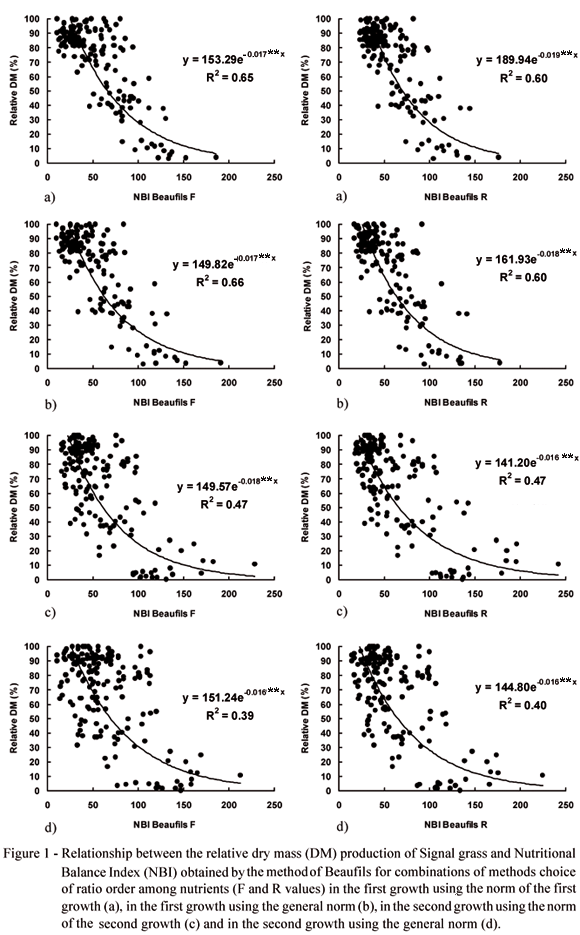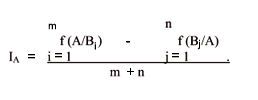The Diagnosis and Recommendation Integrated System (DRIS) allows the interpretation of results of leaf analysis through relationships among nutrients, instead of the absolute and isolated concentration of each one, as it is used by the criterion of sufficiency range. The objective was to evaluate three procedures of calculation of DRIS indices, and to verify the efficiency of DRIS as interpretation method for the results of Brachiaria decumbens (Signal grass). The study was developed with the results of six experiments carried out in a greenhouse at Piracicaba, SP, with nutrient solution. Concentrations of N, P, K, Ca, Mg, S, Cu, Fe, Mn, and Zn were used in the samples of recently expanded leaf laminae of the grass. The validation of the DRIS method used results from an experiment with nitrogen and sulfur rates applied to the same grass from the Mundo Novo farm, Brotas, SP. DRIS indices were calculated according to two criteria to choose the ratio order of nutrients (F value and R value) and three ways to calculate the nutrient functions (methods of Beaufils, Jones, and Elwali & Gascho). Nutritional Balance Index (NBI), calculated according to the generated norms, presented negative and significant correlation coefficients with the productivity in the combinations of methods tested and DRIS methods proposed by Beaufils, Jones and Elwali & Gascho were efficient in detecting concentrations that show nutrients deficiency or excess.
Brachiaria decumbens; DRIS; foliar diagnosis; nutritional balance








